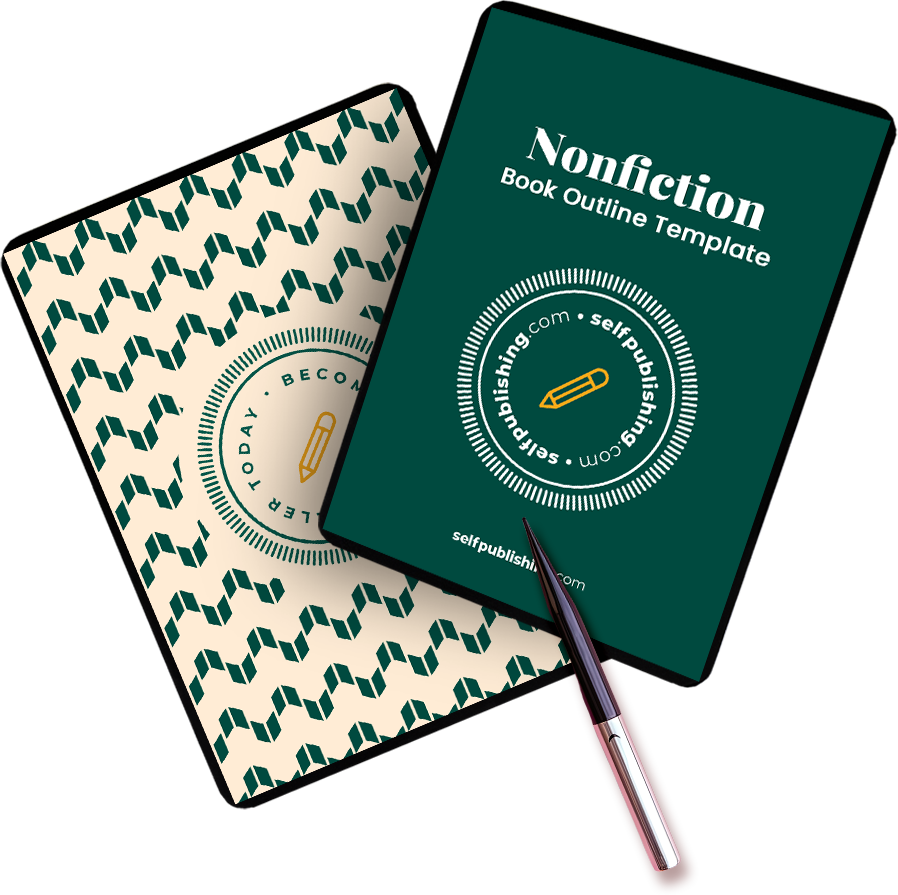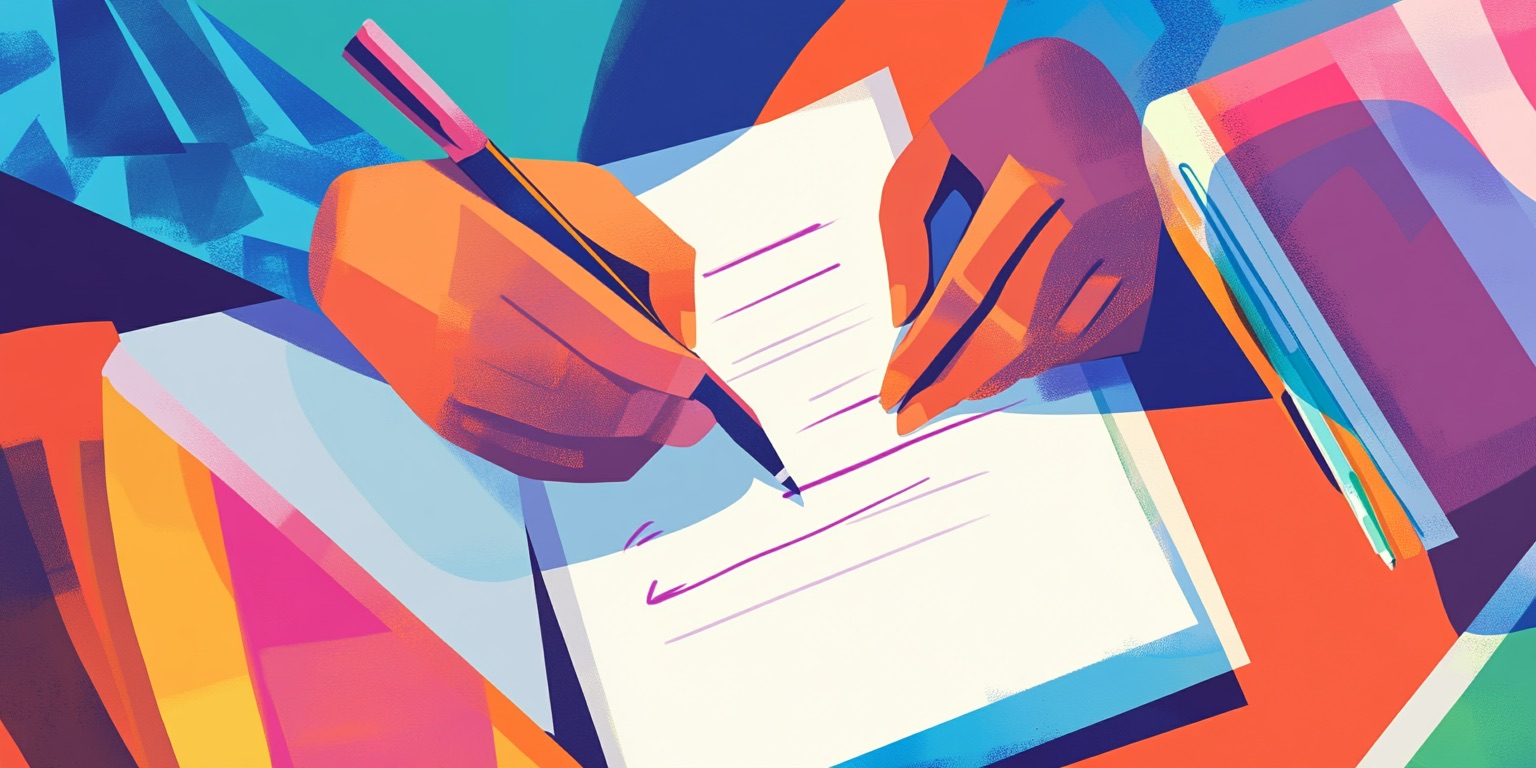Writing a full rough draft is one of the hardest things you will ever do as an author.
You need to take all of these ideas in your head, translate them to the written word, and then somehow organize these endless ideas in the right order. But what is a rough draft, exactly? And how can you write one successfully?
Writing a book is a long challenge, but learning how to write a rough draft is the most important step. It’s also one of the most rewarding steps – especially if you’re writing your first book!
That being said, without your first draft, you have nothing to edit and work on. The book is still sitting in your head, no closer to completion. To help you reach this first book-writing milestone, we will be going over what a rough draft is, how to write a rough draft, what makes it different than a final draft, and some tips to get it done.
What is a rough draft?
A rough draft is the very beginning stage of your book. It is more than a book outline. It is a complete first version of your book – but it’s a version that isn’t ready to be published. There are likely to be mistakes and errors sprinkled throughout, and that’s okay!
If you’ve been following us for a while, you know that we tell people NOT to edit while writing.
What is a rough draft used for? You can think about your rough draft as the foundation upon which you and your editor can build.
“I’m writing a first draft and reminding myself that I’m simply shoveling sand into a box, so that later, I can build castles.”
Shannon Hale
Once you have a draft to work with, there is still work to do.
You may have some more character development questions to ask yourself. You may want to review the setting of your story to ensure it draws your readers in. At a minimum, you will likely have some content and copy edits to make to ensure your book reads well and is error-free.
Related Articles:
What else is a rough draft called?
A rough draft can also be referred to as:
- First draft
- Preliminary draft
- Work in progress (WIP)
- Initial draft
- Concept draft
- Skeleton draft
These terms all convey the idea that the work is in an unfinished or early stage and will likely undergo revisions and improvements.
What is the difference between a rough draft and a final draft?
A final draft is ready for publication but a rough draft is the initial attempt at getting your thoughts out onto paper.
Your first draft should be a good attempt, but it is not anywhere near the final version. Whether you are self-publishing or going the traditional route, every author has to go through an intense editing period to mold their rough draft into something that is ready to be published.
Every book starts with a rough draft. It is a necessary step. Considering that the average first draft of a book is around 50,000 words, it will require a ton of discipline and consistency to finish.
You need to break that down into manageable chunks.
How to write a rough draft in XX steps
Here are our top tips for writing a killer rough draft:
1. Decide on your timeline
First, you need to decide how long you are giving yourself to write your rough draft.

How soon do you want to be holding a rough draft of your book in your hands? Whether you want to do it 30-day sprint-style, à la NaNoWriMo, or take it a few pages at a time over a few months, it is completely up to you.

“I would advise any beginning writer to write the first drafts as if no one else will ever read them—without a thought about publication -and only in the last draft to consider how the work will look from the outside.”
Anne Tyler
2. Mindmap all your ideas
The reason so many writers take so long to create their first draft is that they think their first attempt at a book should be great.
Just know, not even the best authors create a perfect rough draft that is immediately ready to be published.
This step is about taking the ideas out of your head and getting them on paper. You should not put extra pressure on yourself to make that first draft perfect. The rough draft is the time to let your own creativity flow. At this point, there are no bad ideas. You may not even know where your book is going to take you.
Remember, until your ideas are on a page, you cannot start self-editing or working with a professional editor.
Start with a mind map or by drawing out the characters in diagram form. It might look something like this:

Put 15 minutes on a timer and write down everything you think of about the topic of your book – or about your character. You can do this with pen and paper, with mind-mapping software, or with guided prompts in ChatGPT or another tool (we have some ideas below for you!).
Just make sure you don’t overcomplicate the process. If you’re already familiar with a tool and you like using it for brainstorming, perfect. If not, just use a paper and your own mind – it’s all already there!

You just need to get something out there to work with.
Writers call this part “prewriting.” It can be a stage of just purely letting ideas flow without any judgment, and you write faster than usual so you can override your internal editor from thinking too hard – or at all.
3. Prepare your materials
Before you dive into writing, make sure you have everything you need. This includes:
- Any research or resources you’ve gathered
- Your outline (or a general idea of the structure)
- Writing software or tools (Google Docs, Word, Scrivener, etc.)
- A quiet space to focus
Take the time to set up all these things before you start writing so you don’t break your flow once you begin.
4. Begin to structure your book
You’ve got your ideas. Now you can organize them.
You might create general “buckets” in your story to start putting ideas into. These don’t have to take the shape of chapters or fully-developed characters just yet. In fact, putting pressure on yourself to have well-established chapters ahead of time can be a barrier to writing the first few pages of your rough draft.
Instead, look at your mind map and try to identify themes. Circle them and start to put your ideas into those buckets or themes. You can use color-coded highlighters to separate your different ideas. You can also use AI to help you organize these ideas into a list.
This is where your outline will really begin to take shape.

If you are writing a nonfiction book, you might pick five main ideas and make those the different sections of your book. From there, you can start to break down those ideas into individual chapters. You can end each chapter with a short summary or some actionable steps for readers to take.
If you are writing a fiction book, you might categorize your ideas as “before the main event, during the main event, and after the main event.”
Or maybe you have buckets of each of the main characters in your story and start to plug in what happens to them in each bucket. When focusing on characters, I recommend using character bio templates to really start to flesh your characters out. This will help you to understand where they are coming from during your story, as well as where their story arc is headed.
If you do already have your chapters fleshed out, spend a little bit more time outlining each one before you begin your rough draft.
5. Avoid naming your chapters (unless you already have them)
Ignore your internal editor, for now.
Whether you want to call it your internal editor, or “The Resistance” as Steven Pressfield calls it, there is a part in all of us that wants to criticize our work before it is even done (or sometimes before it is even started at all). There is another part of us that won’t let us move onto the next step – actually writing the rough draft – until we feel like we have a perfected outline.
This may come up in the form of thinking you can’t begin the rough draft of your book until you have all your chapters perfectly laid out and appropriately named. It may be that thought that creeps in to say, “that scene is dumb,” “your book will not sell,” and “you should just pack it up and put it away.”
While you are writing your rough draft, you will encounter this resistance.
Just know that almost every successful author has gone through this. Even the best of the best have had their moments where they are plagued with doubt and think they should just throw in the towel.
It is essential that you keep showing up and putting in the work, day by day.
6. Develop a writing routine
A writing routine will save your sanity when it comes to making sure you are showing up for yourself and your future book.
Identify your writing motivation. Name it. Write it down and put it somewhere you will see each day. Then set a daily, weekly, or monthly writing goal for yourself that will help you get your rough draft done in the timeframe you want.

Keep in mind, your writing routine does not need to be painful and long. You do not need to sit down and only write for eight hours with no breaks.

You can simply start with 45 focused minutes on your rough draft. Or maybe your goal is around word count and you aim for 500 words at a time.
Your writing process is unique to you. It needs to be inspiring, perhaps a bit challenging, and, most importantly, achievable.

You can use book writing software to help you keep track of your goals and keep you organized, but you should not feel the need to buy anything more than what you have. For centuries, writers have written by candlelight with nothing more than an idea and a quill pen. You only need to use extra tools and software if it actually supports your writing.
A final piece of your writing routine that many authors overlook is adding a reward.
You’ll get your rough draft done much quicker if you actually enjoy the process! Look for small ways to make your writing time or space feel special. You could do this by setting up your desk in an intentional way, writing in front of your favorite view, writing at your favorite time of day each day, sipping on your favorite drink while writing, or doing something after – like watching an episode of your favorite show when you are done.
7. Start writing your introduction
Dive right into the first section, whether it’s the introduction, an opening scene, or a key point you want to address. Don’t worry about making it perfect; just write what comes to mind. If you’re unsure about how to start, you can always go back and adjust it later.
8. Don’t sweat the details
At this point, it’s more important to get your ideas down than to worry about how smoothly everything connects. You can refine the flow of your draft in later revisions. For now, just keep writing.
Following your outline, start working through the body of your draft. As you write, try to focus on:
- Writing freely without stopping to edit
- Filling in gaps with bullet points or placeholders if you’re not sure of specifics yet
- Expanding on ideas as much as you can at this stage
If you get stuck or hit a section where you’re unsure of what to write next, leave a note to yourself (e.g., [add more detail here], [research this point], [find a better transition]). This will allow you to keep moving forward without getting bogged down in the details.
What are the next steps after completing your rough draft?
After your rough draft is finished, there is still a lot of work to be done. While you’ve completed the hardest step (actually writing) you now need to edit your rough draft. In fact, your draft will need to undergo multiple rounds of editing.
To start, it’s important to self-edit your manuscript to ensure your rough draft is the best it can be before it goes in front of the eyes of a professional editor. Read through your draft to see if you can find any errors with grammar or story flow.
Once you’ve edited to the best of your ability, it’s time to send your rough draft to a professional editor. They understand the publishing industry well and will be able to recommend changes that you wouldn’t think of on your own to ensure your book is well received by your readers. They will also catch and errors with grammar, syntax, and typos that you might have missed.
How complete should a rough draft be?
The short answer is: not very. It’s in the name, after all. A rough draft doesn’t need to be fully polished or complete, but it should capture the core ideas and structure of your work.
Focus on getting your key ideas or arguments down on paper. Don’t worry if they aren’t fully fleshed out or articulated perfectly. The goal is to have something to build upon. Think of it as a first pass at organizing your thoughts.
It’s normal for parts of your rough draft to be unfinished or lacking detail. You might come across sections where you don’t have all the information yet or where you’re unsure of the wording. That’s okay—just make a note to come back to it later.
Transitions between paragraphs or sections don’t need to be smooth in the rough draft. It’s okay if your writing feels a little disjointed or if you find awkward spots where ideas don’t quite connect. The goal is to get everything down in some form, and you can smooth it out in later revisions.
Don’t worry about grammar, punctuation, or fine-tuning sentence structure just yet. The rough draft is about getting your ideas into a draftable form; refinement happens later.
What are some tips for starting a rough draft?
Here are some quick tips to get you started with your rough draft:
Don’t edit while your write
One of the biggest mistakes writers make when drafting is editing as they go. This slows down your writing process and can stop the flow of ideas. The key at this stage is to get everything out of your head and onto paper (or screen). You’ll have plenty of time to revise later, so just focus on writing and getting your ideas down.
Use your outline and fill in the blanks
Your outline is your roadmap, so don’t veer off course. If you’ve created a solid outline, use it to guide your draft. Think of it as a template to fill in with the details of your ideas. If you get stuck, just move on to another section and come back later. You’re not aiming for perfection, just progress.
Aim for a daily writing goal
Setting a daily writing goal can help you build momentum. It doesn’t have to be a massive word count—start with something achievable, like 500 words a day. The important thing is consistency. Even on days when you’re not feeling super inspired, getting those words down will push your draft forward.
Use writing software to organize your draft
Consider using writing software like Scrivener, Google Docs, or Notion. These tools can help you organize your draft with ease, allowing you to outline, add research, and keep track of your progress. Some software also has features like word count goals and document splitting, which can be useful as you start drafting.
Allow yourself to write badly
Remember, your rough draft doesn’t need to be perfect. Let go of the pressure to write flawlessly, and embrace the messy, imperfect nature of a first draft. This is your chance to get all your ideas down and refine them later.
Writing a rough draft isn’t about perfection it’s about progress. It’s the essential first step that transforms your ideas from scattered thoughts into a tangible, workable manuscript. Every great book starts here, in the messy middle, with words that might not be perfect but are filled with potential.
So permit yourself to write imperfectly, to explore, and to discover your story along the way. Stay focused, trust your outline, and keep showing up. The only draft you can’t edit is the one that doesn’t exist—so start writing, and let the magic unfold from there.
























